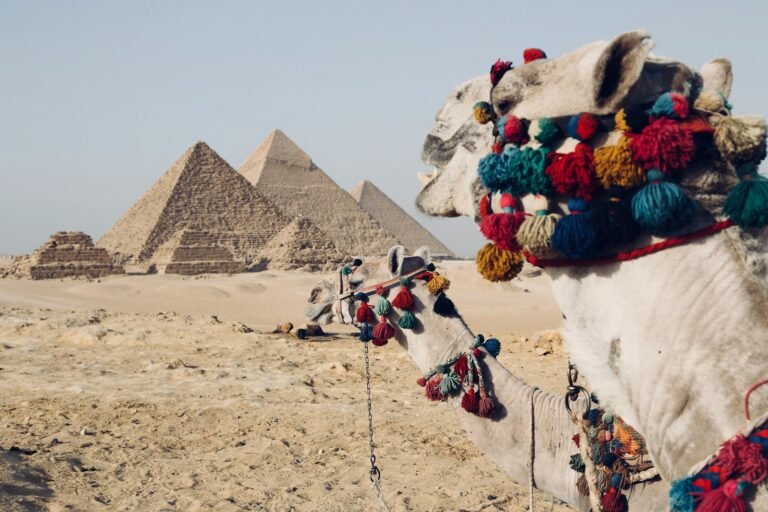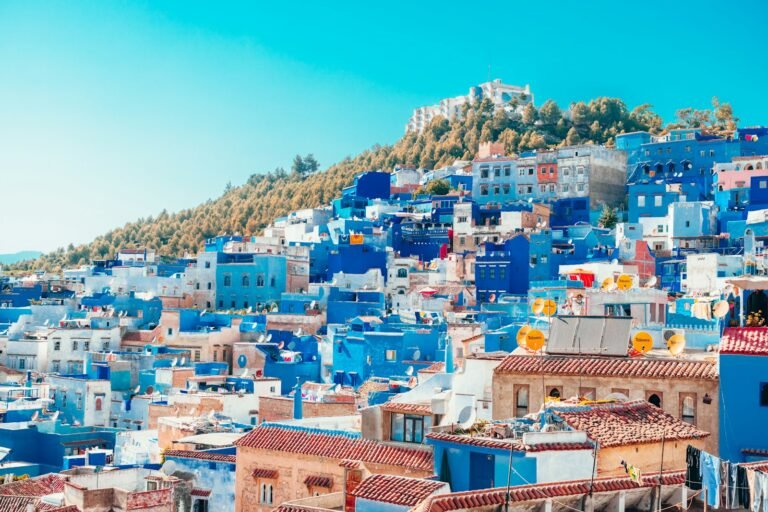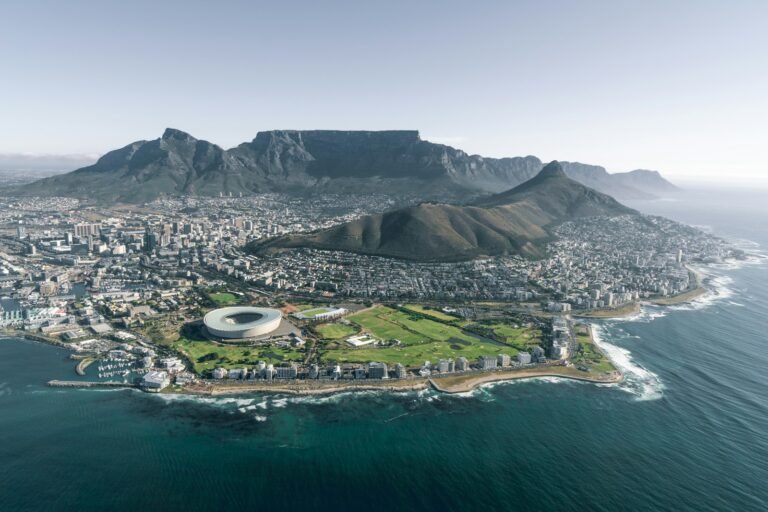Namibia
Explore Namibia: A Unique Adventure Awaits You
The Ultimate Travel Guide to Namibia: A Journey Through Natural Wonders and Cultural Riches! Namibia, a land where the deserts meet the sea, the ancient meets the modern, and wildlife roams free, beckons explorers seeking adventure, serenity, and awe-inspiring landscapes. From towering sand dunes to the rugged coastline and sprawling savannas, Namibia offers an unforgettable journey. In this guide, we’ll take you through the top regions, culture, history, and experiences to make your visit as enriching and exciting as possible.
The Land of Contrasts and Wonders
Imagine standing at the edge of a vast, ochre-colored desert, the wind whispering through the dunes as the sun sets in a blaze of orange. Namibia is a country that offers moments like these in abundance—a place where the beauty of the natural world is both humbling and exhilarating. With its diverse landscapes, rich cultural heritage, and incredible wildlife, Namibia promises an experience that is as visually stunning as it is soul-stirring. Whether you’re an avid adventurer, a nature lover, or someone who simply wants to immerse themselves in a land of stunning contrasts, Namibia delivers it all.
Region-by-Region Breakdown
1. The Namib Desert & Sossusvlei
Arguably Namibia’s most iconic landscape, the Namib Desert stretches over 2,000 kilometers along the coast. Known for its surreal dunes, some of the highest in the world, and the ghostly remnants of dead trees in Deadvlei, the desert is a photographer’s dream. Sossusvlei, the heart of the Namib Desert, is home to the famous Dune 45 and the awe-inspiring Deadvlei, where the stark, bleached skeletons of ancient trees rise dramatically against the backdrop of the towering red dunes. This region exudes a peaceful, almost otherworldly vibe, making it perfect for sunrise hikes and tranquil explorations.
Top Things to Do:
Climb Dune 45: One of the most photographed dunes, perfect for a sunrise or sunset hike.
Visit Deadvlei: Explore the surreal, clay pan filled with ancient trees, a striking contrast to the surrounding dunes.
Sesriem Canyon: Take a short hike through this beautiful canyon carved by the Tsauchab River, which offers striking rock formations and a refreshing break from the desert heat.
2. The Skeleton Coast
This stretch of coastline is as haunting as it is beautiful. With its fog-shrouded shores, shipwrecks scattered along the beaches, and harsh yet captivating landscape, the Skeleton Coast feels like a place where time stands still. It’s a haven for wildlife enthusiasts, with seals, desert-adapted elephants, and the occasional lion roaming the coastline.
Top Things to Do:
Explore Shipwrecks: Take a guided tour to discover the eerie, rusting remains of ships that met their fate along these dangerous shores.
Visit Cape Cross Seal Reserve: See one of the largest colonies of Cape fur seals in the world, a thrilling sight for wildlife lovers.
4×4 Adventures: For the more adventurous, a guided 4×4 tour across this isolated and rugged terrain is a must-do experience.
3. Etosha National Park
Etosha National Park is the crown jewel of Namibia’s wildlife offerings. A vast salt pan dominates the park’s landscape, and its waterholes attract a parade of animals year-round. Whether you’re a safari novice or a seasoned wildlife enthusiast, Etosha offers some of Africa’s best game viewing. From elephants and lions to rhinos, giraffes, and zebras, Etosha’s wildlife is as diverse as it is abundant.
Top Things to Do:
Game Drives: Take a guided safari through Etosha’s different zones, from the central salt pans to lush green areas that attract myriad wildlife.
Waterhole Viewing: Stay in one of Etosha’s lodges with a view of the waterhole for front-row seats to animal behavior, especially in the early morning or late evening.
Visit Okaukuejo: The best waterhole for seeing wildlife at any time of the day or night, especially elephants, lions, and rhinos.
4. Damaraland & the Himba People
Damaraland is a vast, semi-arid region that is both rugged and mesmerizing, offering opportunities to see the rare desert-adapted elephants, ancient rock engravings, and the dramatic landscapes of the Brandberg Mountains. The region is also home to the Himba people, a semi-nomadic ethnic group who have managed to preserve their ancient traditions and lifestyle.
Top Things to Do:
Visit Twyfelfontein: Explore one of the richest concentrations of rock engravings in Africa, dating back 6,000 years.
Himba Village Tour: Meet the Himba people, learn about their fascinating culture, and witness their unique way of life.
Desert Elephant Tracking: Join a guide to track the elusive desert-adapted elephants, an experience that blends adventure and conservation.
5. Windhoek & the Capital Region
Windhoek, Namibia’s capital, is a bustling city that offers a great introduction to the country’s urban life and culture. While small in size, it’s a cosmopolitan hub with German colonial architecture, vibrant markets, and a growing food scene. Windhoek is also a perfect base for exploring nearby destinations such as the stunning Khomas Highland.
Top Things to Do:
Visit the Independence Memorial Museum: Learn about Namibia’s struggle for independence and its cultural heritage.
Explore the Craft Markets: Windhoek’s markets offer a wonderful selection of Namibian arts and crafts, perfect for souvenirs.
Dine at Joe’s Beerhouse: This iconic spot offers a great introduction to Namibian food and beer in a lively, relaxed atmosphere.
Culture & History: A Journey Through Time
Namibia is a country shaped by rich cultural diversity and a complex history. From the ancient rock art of the San people to the German colonial past, and the struggle for independence that culminated in 1990, Namibia’s cultural tapestry is as vibrant as it is poignant.
The Himba people, one of Namibia’s most iconic ethnic groups, continue to live in the Damaraland region, their distinctive red ochre-painted skin and braided hair forming a striking image against the arid landscape. In the south, the San people’s rock art offers a glimpse into the lives of some of the world’s earliest known human inhabitants. Namibia’s colonial past is evident in the architecture of cities like Windhoek and Swakopmund, while the Namibian independence struggle is commemorated in museums and monuments across the country.
Gastronomy & Dining: A Taste of Namibia
Namibia’s culinary scene is a delightful mix of traditional African flavors and German influences. Game meat is a common feature on menus, with kudu, springbok, and ostrich often featured as delicacies. Don’t miss out on tasting bobotie, a flavorful spiced meat dish with a baked egg topping, or kapana, a popular street food served with spicy chutneys.
For a true local experience, visit the Windhoek Market, where fresh produce and traditional snacks like biltong (dried cured meat) are sold alongside crafts and textiles.
Nature & Wildlife: A Playground for Nature Lovers
Namibia is one of the best destinations for eco-tourism. From the towering dunes of Sossusvlei to the wildlife-rich plains of Etosha, the country is a haven for nature lovers and conservationists. Namibia is also home to unique desert-adapted wildlife, including elephants, lions, and giraffes, and offers one of the best opportunities in Africa for seeing wildlife in their natural habitats.
Best Time to Visit:
Namibia’s weather varies significantly across the country. The best time to visit is during the dry season (May to October), when wildlife is easier to spot, and temperatures are more comfortable for outdoor activities. For a more tranquil experience, consider visiting in the shoulder months of April or November, when crowds are fewer but the weather is still pleasant.
Why You Should Visit Namibia
Namibia is a land of contrasts, where adventure and tranquility meet in perfect harmony. Whether you’re drawn by the lure of the deserts, the beauty of the wildlife, or the rich cultural tapestry, Namibia offers something for every traveler. Plan your trip, pack your sense of wonder, and prepare to immerse yourself in one of Africa’s most stunning and diverse countries.
Nearby Destinations to Explore:
While in Namibia, consider extending your adventure to Botswana’s Okavango Delta or the Victoria Falls in neighboring Zimbabwe. Both are within easy reach and offer unparalleled wildlife and natural beauty.
Ready to experience the magic of Namibia for yourself? Start planning your adventure today and discover a country that will leave you with memories that last a lifetime. Share this guide with friends and family who might also be inspired to explore Namibia’s extraordinary landscapes, culture, and wildlife. We invite you to subscribe to our YouTube channel for more travel insights and adventures. Let Namibia inspire your next travel adventure, where every moment is filled with beauty, joy, and unforgettable memories!
Discover Namibia
Uncover Namibia’s stunning landscapes and wildlife








